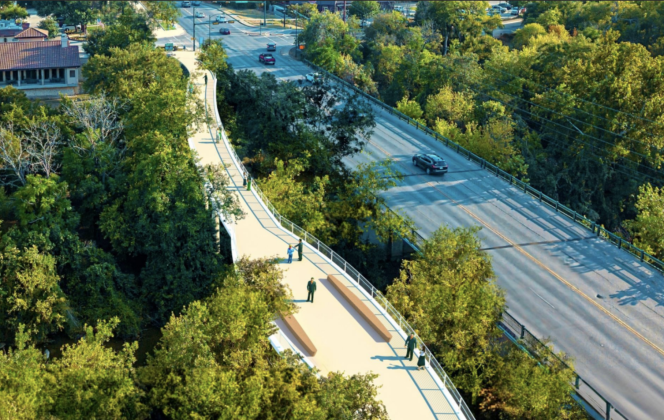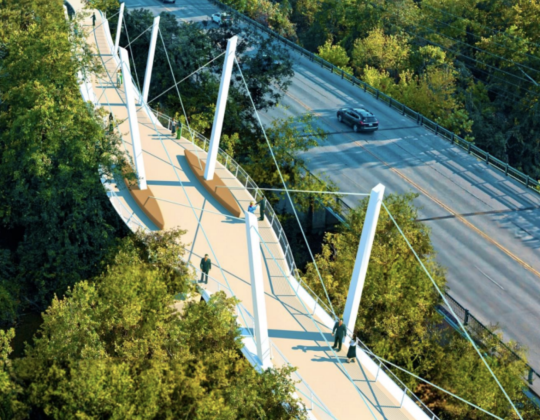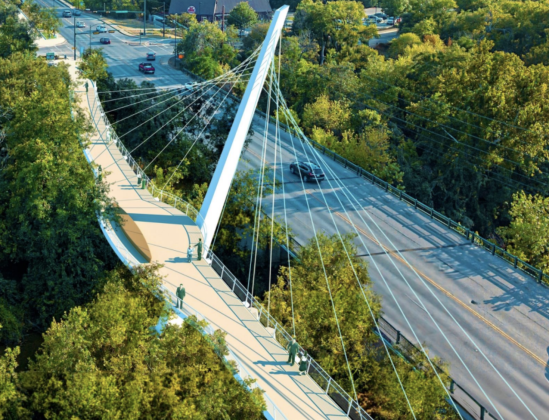As the City of Georgetown continues evaluating three proposed designs for a pedestrian bridge that would run parallel to the Austin Avenue bridge over the San Gabriel River, the city has learned a grant application to cover some of the project’s costs was rejected by the Texas Department of Transportation.
Although this grant was rejected — which could create financial constraints — Miguel Rosales, the bridge architect, encouraged the council at their November 28 workshop to keep applying to grants to generate new funding.
“The rejection of the grant, in some ways I was not completely surprised because the [bridge] concept was never really developed to any detail,” Mr. Rosales said. “In my experience all over the U.S., you have a much better chance to win a grant when the plans are advanced, you have approvals and you have the project ready to go.
“I would also encourage [city council] to continue to apply to grants, especially the federal grants…you could just win a smaller one you know $5 or $6 million, then you’re off the situation of the funding.”
City council discussed the three proposed bridge designs at the meeting. The designs vary in height and in cost. There would be two different pedestrian bridges so there could be a bridge for both South Austin Avenue and North Austin Avenue.
The cost for the first concept is estimated at $14 million, with upkeep over the next 75 years costing an estimated $11.9 million. The second concept is estimated to cost $17.7 million, with upkeep over the next 75 years costing an estimated $15.5 million. The final concept is estimated to cost $18.5 million, with upkeep over the next 75 years costing an estimated $15.9 million.
Current city funding for this project is $11.4 million.
Even with the proposed costs, the council was divided on which design to choose.
“The first time we looked at this, I was very much in favor of concept two,” said Council Member Ron Garland, District 4. “Now, I believe number one meets a lot of the things we’re looking for [in] a gateway to downtown.”
Council members Shawn Hood, Amanda Parr, Jake French and Ben Stewart learned towards the second and third concepts, which have more visibility from Interstate 35 because of the added heights shown in the concepts.
“Whatever we decide to do here, we’re gonna have to live with forever,” Council Member French, District 6 said.
If financial concerns were not a constraint, Council Member Kevin Pitts, District 5, said he would choose the second concept over the first concept.
After discussion from the council, it was decided that City Manager David Morgan’s office will look at funding strategies based on the city’s five-year model, including a financial model for what building concepts two or three would look like.
“We would have to issue more debt in order to fund a project beyond what our current model, our current scope is of $11.4 million,” Mr. Morgan said. “And by doing that we would need to look at which projects need to move out, or reassess kind of the five year model."




